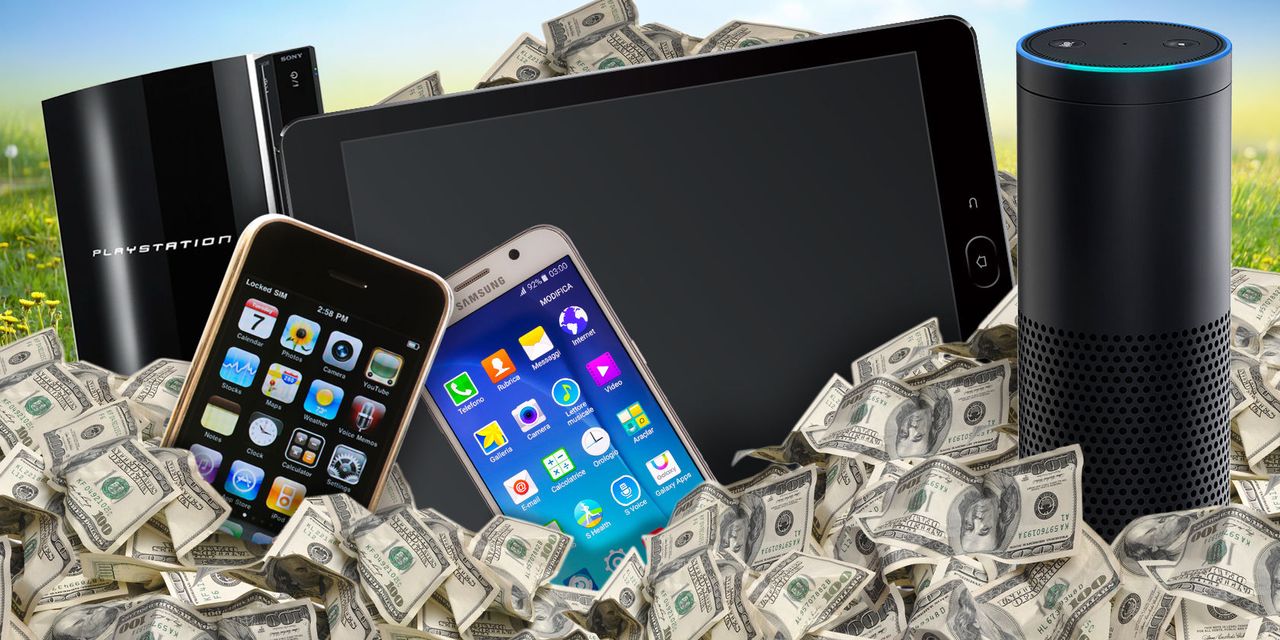When it comes to old personal tech lying around the house — from smartphones to tablets to gaming consoles — many people may not realize how much value is still left in their devices.
Keeping technology out of landfills or from simply gathering dust in the back of the closet by exploring tech-specific resale websites that match buyers with sellers can net some extra bucks. As for would-be shoppers, resale can make a lot of sense for younger family members old enough for their first phone, but at risk of misplacing it. Resale can also feel rewarding — by introducing lower-cost access to technology and gaming fun to the families especially feeling the pinch of high gas and food prices.
The good news is that tech firms are finally making it easier to extend the life of older devices.
How to access resale sites for phones, laptops and other tech
Selling on sites such as Swappa.com and its competitors can earn you more cash for items you no longer use like phones, laptops, smartwatches, gaming systems, home tech and tablets.
You should compare resale marketplaces to the many trade-in and buyback programs where you can sell your used iPhone and other technology. For sure, not all buyback sites are created equal, and resale may prove more transparent.
The benefits of reselling your used tech devices
“Consumers that choose store carrier trade-in programs typically get store credit and usually less value, while those who choose buyback services earn below-market offers so that devices can be resold by the companies themselves,” says Ben Edwards, CEO of Swappa.com.
Plus, buyers may find better pricing and variety on resale sites than always buying new.
Importantly, reselling and buying gently used tech, and basically any steps to prolong its life, finally has stronger backing by the manufacturers.
Microsoft
MSFT,
earlier this year released the results of an independent study that backed what right-to-repair and environmental advocates have been pushing: Fixing devices instead of replacing or reselling old devices reduces waste and the greenhouse gas emissions associated with manufacturing new ones.
In response, Microsoft will loosen its restrictions on repairing old tech, a move that shortly followed Apple’s
AAPL,
“Self Service Repair,” a first-of-its-kind program that allows owners of recent iPhone models to order genuine Apple parts and tools to conduct basic smartphone repairs, like screen and battery replacements.
Samsung and Google
GOOGL,
said they’d also partner with the repair guide site iFixit.
And the environmental benefit…
By one measure, electronic waste, or e-waste, is the most rapidly growing trash problem globally. We generate about 50 million tons of it every year, although that’s both personal tech and from businesses.
Still, that’s the equivalent to throwing out 1,000 laptops every single second.
The cost and savings of reselling used tech
With a trade-in through a carrier or a buyback site, you’re typically losing value of sometimes as much as 50%, said Swappa’s Edwards. Sellers often give up their device to the carrier or retailer because it’s convenient and they feel the pressure on the spot to unload the item.
Bidding on a secondary market site typically means greater product price transparency for both buyers and sellers.
Buyback programs can sometimes hide shipping costs and other fees. Resale site Swappa, for instance, applies a 3% fee to both the buyer and the seller, which it makes clear as you navigate their offerings. Always ask about fees before purchase.
Consider a resale site that acts as a gatekeeper for reliability: no broken screens; ready to be activated, for instance. And make sure the site requires proof of ownership and does not sell lost or stolen items. That can save in hassle and money as well.
Be mindful of …
The incentive for savings on a new device may be tied to a trade-in. For sure, carriers want you back, so if you can negotiate a larger-than-expected incentive, it’s worth comparison shopping.
Warranties sometimes transfer to new owners, but that’s on a case-by-case basis, so it’s wise to ask before buying on secondary markets.
That all said, if upcycling is part of your motivation, you may still feel better knowing your old technology is guaranteed new life, at least for a little while.
Editor’s note: This article launches our recurring The Upcycler column, intended to help you make more with less, save or earn extra money, expand your creative side and shrink your carbon footprint.
Upcycling involves reusing objects for practical or aesthetic purposes, prolonging their usefulness and diverting them from a landfill. In addition, the column will explore the benefits of repairing or upgrading more of what we already own, including personal technology and appliances; tapping potentially life-changing free or deeply discounted goods and services; and traveling in less expensive, intrusive and consumptive ways.
At times we’ll talk about spending smarter as much as consuming less. And for anyone ready for a thorough lifestyle downsizing, we’ll dive into the expanding No Buy movement. After all, if we can “upcycle” more of our time, earnings and peace of mind, everything might feel brand new.
Have your own upcycling ideas or dilemmas? Reach out on Twitter @RachelKBeals or by email to [email protected].
